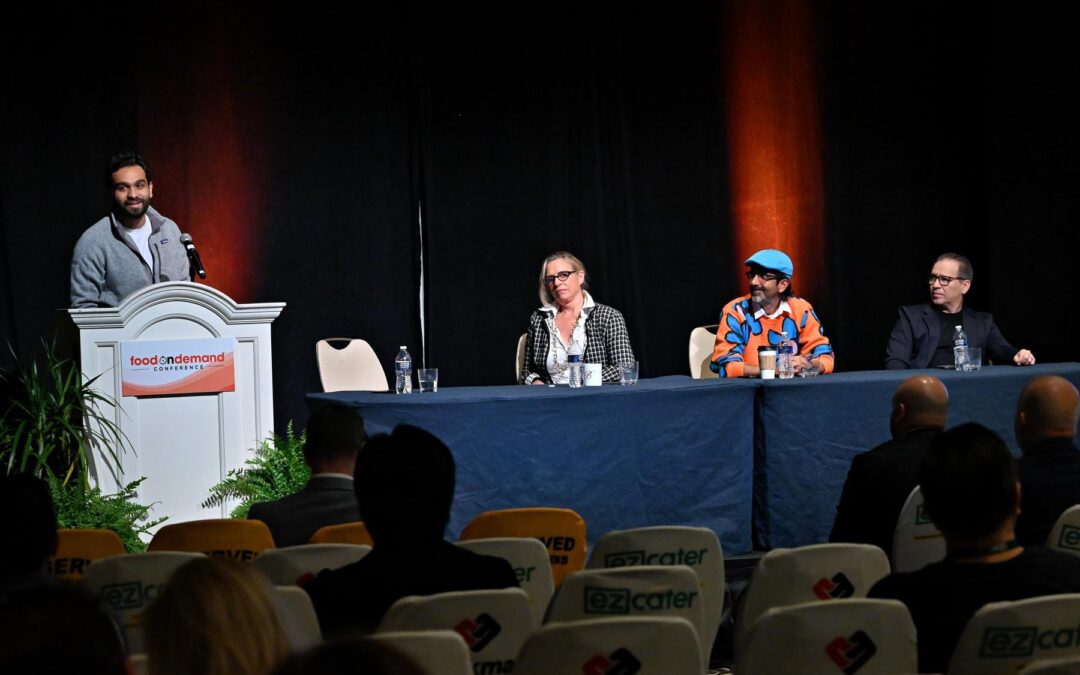Paul Barron, the CEO of Rever Networks, believes Starbucks is in trouble. The brand’s overall consumer sentiment is down six points, he reported to an “Around The Industry” panel at the Food On Demand Conference, with Gen Z sentiment down 12 points. He feels the company should spend more time courting degenerates.
Wait, what?
Barron is an admirer of Raposa Coffee, which produces a Web3 gaming loyalty program called “Magic Eden” for degens, short for degenerates. “The degens are an irreverent community of consumers who understand gaming and culture. They’re huge in Asia and South America and they are emerging here,” he said.
People over 30 in the audience were scratching their heads. People under 30 were nodding theirs.
“If you can build platforms by doing partnerships with companies like Playstation, and offering things like NFTs, it can help extend your brand IP,” Barron said. “That is huge for restaurants.”
Ashwin Kamlani, CEO of Juicer, is also about finding huge wins for operators. One of the areas he has diagnosed as a barrier to growth is in dynamic pricing. Not the practice, which he supports. The phrase. He despises it.
“It creates a lot of unnecessary fear. People walk in and think they are going to pay a different price than the person next to them. I think we should say pricing science from now on,” he said.
And it is a science. The mistake many operators make is in simply using one menu and sharing it with third-party delivery providers, he said.
“One item might sell super well on Uber Eats but not on DoorDash. Be smart about your pricing. Don’t be afraid of making them different based on the channel. Don’t put constrictions on yourself,” he said.
The key is to make data-based decisions based on precedent.
“Look at the historic patterns in your sales. Are there certain items that sell well in certain locations? At certain times? In certain channels?,” he asked.
That’s where AI and machine-learning tools can come in handy. They can help you crunch those numbers. Just don’t expect yourself to be a master at them at first, said Kamlani, as AI is “still in its infancy.” But familiarize yourself. Once you get comfortable, the tools have tremendous potential upside.
“When you compile all the new cool technologies into one consolidated platform, it becomes possible to do things that have never existed in restaurants, such as shifting demand patterns and luring customers into the restaurant in real time,” he said.
That’s next-level thinking for restaurants. Cynthia Hollen, CEO of Mavi.io, provided next-level thinking for cars.
“We’re about to see a world where an entirely new channel of commerce is about to come into your life,” she said.
The average American spends 72 minutes a day in a car, she said. The days of primarily using a phone or a watch or a wearable of any kind to order a meal may soon be declining.
“The largest interactive screen in your household is about to be in your car. Digital wallets will be embedded in the technology and will allow consumers to conduct in-dash shopping, all at the point of hunger,” she said.
What won’t be changing is the consumer insistence on speed. While many operators dream about dropping third-party delivery partners and managing their own operations, that comes at a risk, cautioned Mahmoud Ghulman, CEO at Nash.
“Expectations have been shifting in the past couple years and we are seeing a huge surge in demand for speed,” he said. “If you want to run a delivery operation, you have to plan for fluctuations. Balancing the number of drivers with the types of order is complex. You need to densify the last mile. This is not easy. There are tools to make it possible. But it takes orchestration.”


